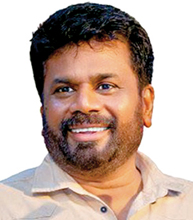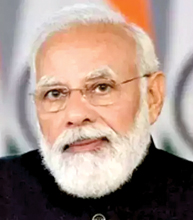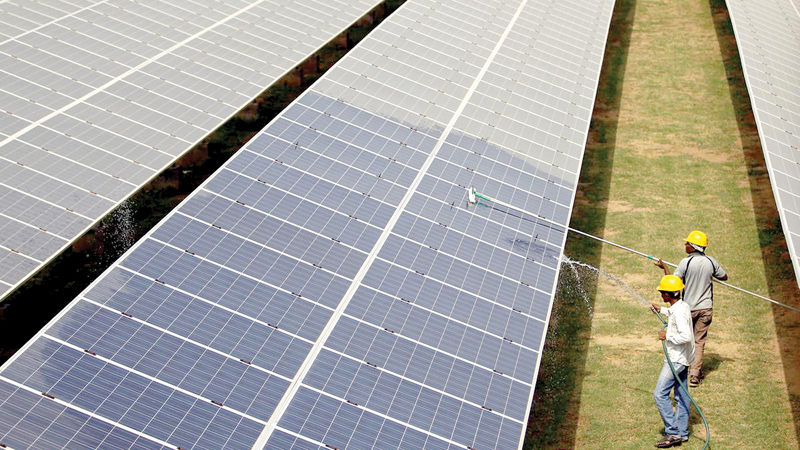 Sri Lanka will see the long-awaited launch of the Sampur power project during Indian Prime Minister Narendra Modi’s three-day visit. Originally signed in 2006 under Mahinda Rajapaksa’s Presidency as a coal-fired plant, the project was later modified in 2016 under President Maithripala Sirisena to use Liquefied Natural Gas (LNG). Now, nearly two decades after the initial agreement, it is being launched as a solar power project.
Sri Lanka will see the long-awaited launch of the Sampur power project during Indian Prime Minister Narendra Modi’s three-day visit. Originally signed in 2006 under Mahinda Rajapaksa’s Presidency as a coal-fired plant, the project was later modified in 2016 under President Maithripala Sirisena to use Liquefied Natural Gas (LNG). Now, nearly two decades after the initial agreement, it is being launched as a solar power project.
Since the agreement was first signed, Sri Lanka has had five Governments, each modifying the project to fit its policies. It is only now that the ground-breaking ceremony is finally taking place.
Modi’s visit signifies an important phase in Indo-Sri Lankan relations. His discussions are expected to focus on economic cooperation, regional security, trade, and tensions over land connectivity, Adani’s renewable energy projects, and the Trincomalee oil tank farm.
Time-tested relations
Despite periodic strains, India and Sri Lanka share deep historical, cultural, and economic ties. Modi’s visit highlights India’s commitment to aiding Sri Lanka’s economic recovery through financial assistance, credit lines, and infrastructure projects.

President Anura Kumara Dissanayake

Indian Prime Minister Narendra Modi
The new Government, led by President Anura Kumara Dissanayake, is signalling a willingness to strengthen ties with India. Dissanayake’s December visit to Delhi helped smooth relations with the National People’s Power (NPP) Government, despite the historically anti-Indian stance of its key coalition partner, the Janatha Vimukthi Peramuna (JVP).
Under President Rajapaksa’s second term, his strong alignment with China strained ties with India, often seen as the “big brother” of the region. Some analysts said that India’s influence has occasionally been overbearing, leading to a lack of trust in Sri Lanka.
Historical grievances further complicate relations. India’s role in Sri Lanka’s civil war, the deployment of the Indian Peace Keeping Force (IPKF), and the Indo-Lanka Accord has left lasting concerns.
During late 1970s, Sri Lanka’s first Executive President, J. R. Jayewardene, leaned towards the United States, sparking India’s fears that Trincomalee’s strategic port could be used as a U.S. military base.
India’s response, coupled with the 1983 anti-Tamil riots in Sri Lanka, led then-Prime Minister Indira Gandhi to train Sri Lankan Tamil militant groups, including the Liberation Tigers of Tamil Eelam (LTTE).
The subsequent 26-year civil war devastated Sri Lanka. After the assassination of Indian Prime Minister Rajiv Gandhi in an LTTE suicide attack in 1991, India supported Sri Lanka in defeating the rebels. However, lingering resentment persists over India’s involvement in the war and its impact on Sri Lanka.
Trust deficit
Many Sri Lankans still view India’s involvement in their affairs with suspicion, fearing excessive Indian influence over national policies and resources. Nationalist factions in Sri Lanka, particularly, those aligned with left-wing parties strongly oppose Indian investments. They said that such projects compromise Sri Lanka’s sovereignty and give India excessive control over strategic assets like ports, energy, and infrastructure. The new Government under President Dissanayake has been particularly cautious about foreign deals, especially with India.
Many Indian projects in Sri Lanka have been criticised for a lack of transparency and unfavourable terms. The Adani Group’s renewable energy projects, for instance, were awarded without competitive bidding, raising concerns about corruption and unfair deals. The Government recently scrapped Adani’s power purchase agreement, demanding a lower tariff, which led to Adani pulling out.
Another reason for trust deficit with India is the way China deals with Sri Lanka. China has been a major investor in Sri Lanka, funding large-scale infrastructure projects such as the Hambantota Port and Colombo Port City.
Some Sri Lankan Governments have favoured Chinese investments over Indian ones due to easier financing terms and fewer political conditions. However, China’s influence has also led to huge debt burden concerns, making it a contentious issue in Sri Lanka’s economic policies. Sri Lanka has repeatedly resisted Indian attempts to control key strategic projects including the Trincomalee Oil Tank Farm, which India has sought to develop and manage. But Sri Lankan nationalists oppose foreign control over such an important energy asset.
There is a belief among some Sri Lankan policymakers that India exerts undue pressure on domestic decisions while different Sri Lankan Governments have had different approaches to India. While some administrations, like those under Ranil Wickremesinghe, were more open to Indian investments, others have been more sceptical and nationalistic in their approach.
Crucial economic support
India played a pivotal role in Sri Lanka’s economic crisis, providing aid when the West and the International Monetary Fund (IMF) hesitated. As Sri Lanka continues its economic recovery, Modi’s visit is expected to focus on economic assistance, debt restructuring, maritime security, and trade.
Indian Foreign Secretary Vikram Misri emphasized India’s role in Sri Lanka’s debt restructuring.
“We played an important role as co-chair of the official creditors’ committee and have been working with Sri Lanka to finalise debt restructuring agreements. Some have already been signed, and others will be concluded soon,” Misri told a media briefing in Delhi on Friday.
Maritime security and defence cooperation
Given Sri Lanka’s strategic location in the Indian Ocean, maritime security is a key topic. Modi’s visit is expected to emphasize joint Naval exercises, intelligence-sharing, and efforts to combat smuggling and piracy.
Misri also hinted at an update to an existing defence cooperation agreement with Sri Lanka, which may be finalised during Modi’s visit.
India remains one of Sri Lanka’s largest trading partners. Modi’s discussions will likely focus on expanding trade agreements and reducing barriers, with Indian investors eyeing Sri Lanka’s tourism, IT, and manufacturing sectors. The stalled Economic and Technology Cooperation Agreement (ETCA) may also be revisited.
However, some contentious issues continue to strain relations:
Land Connectivity Projects: Talks about a land bridge between India and Sri Lanka have sparked debate. Proponents said it could boost trade and tourism, while critics fear it could compromise Sri Lanka’s sovereignty.
Adani’s Renewable Energy Investments: The Adani Group’s renewable energy projects in Sri Lanka, particularly, in the Northern Province, have faced opposition over transparency and land acquisition concerns. The new Sri Lankan Government scrapped the previously agreed power purchase rate of 8.26 US cents, asking Adani to lower it to 6 US cents. Adani subsequently withdrew, but Modi’s visit may see negotiations for a revised deal.
Trincomalee Oil Tank Farm: India has long sought control of this strategic asset, but nationalist factions in Sri Lanka oppose foreign management. Modi’s discussions will likely focus on a balanced agreement that allows Sri Lanka to retain sovereignty while benefiting from Indian investment.
Modi’s visit comes amid shifting regional dynamics. China’s growing presence in Sri Lanka—through projects such as the Colombo Port City and Hambantota Port—has raised concerns in India. Modi is expected to stress the importance of maintaining a balanced foreign policy.
India’s engagement with Sri Lanka is also part of a broader Indo-Pacific strategy to ensure regional stability and security while countering China’s influence. Modi’s visit signifies India’s commitment to deepening its regional partnerships.




